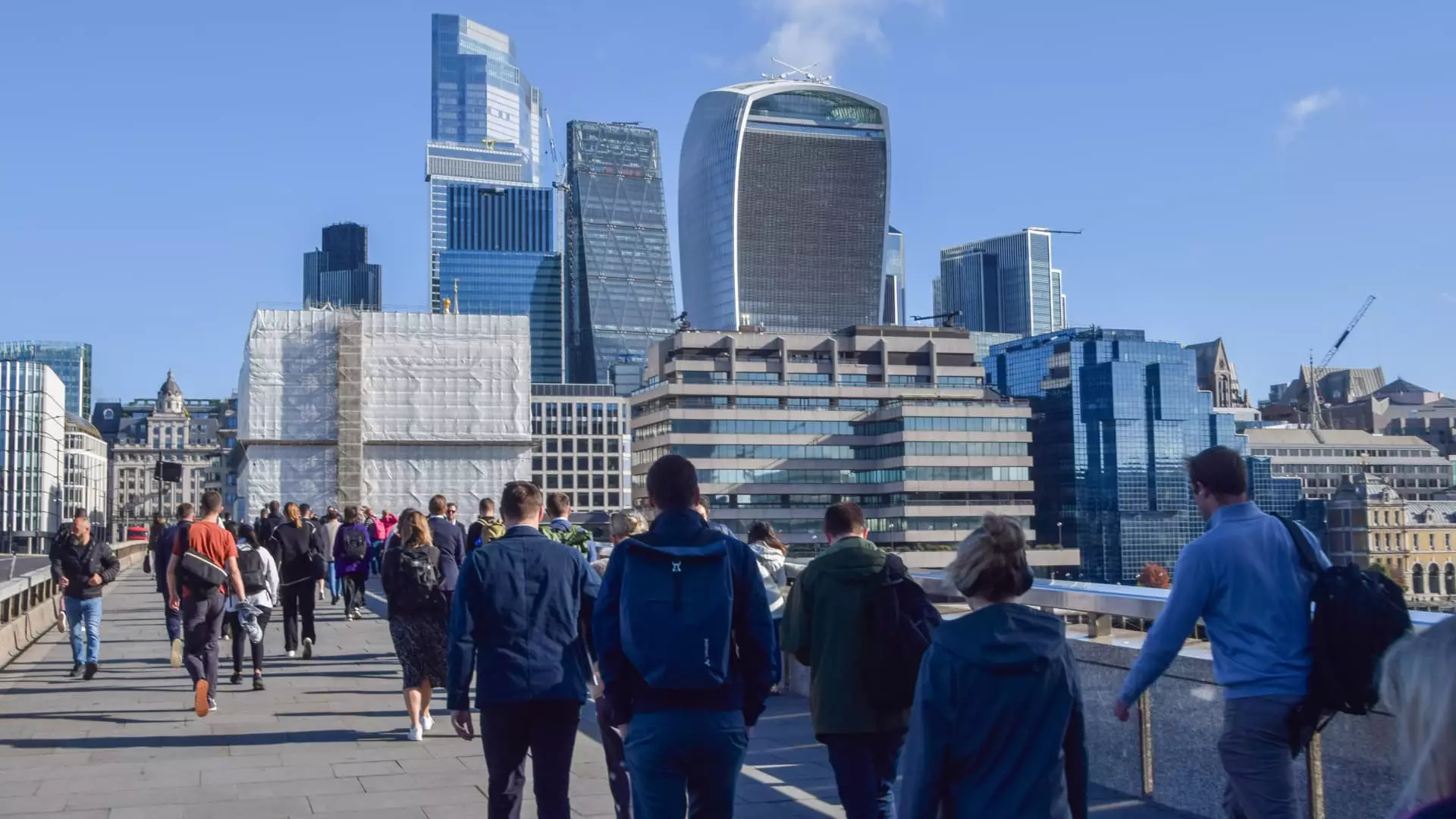The landscape of office real estate in Europe has seen significant upheavals in recent years, especially since the pandemic. However, recent developments indicate that the United Kingdom is spearheading a comeback in this sector. As investors navigate the complexities of evolving market demands, the U.K.’s office transactions reflect a robust shift, presenting unique opportunities in a market characterized by past malaise and future potential.
In the first half of 2024, the U.K. recorded approximately 4.1 billion euros ($4.52 billion) in office transactions, making up 29% of all European office deals, according to Savills. This marks a noteworthy increase from a five-year average of just 24%. In stark contrast, France reported 1.8 billion euros (13%) while Germany trailed slightly at 1.7 billion euros (12%). Such figures highlight a renaissance of sorts for the U.K. real estate market, providing a glimmer of hope within a broader decline.
Despite this, the overall European office investment fell by 21% compared to the previous year, totaling 14.1 billion euros for the period. This significant drop is illustrative of the sector’s struggle with the aftershocks of pandemic-induced transformations and rising interest rates. Nonetheless, analysts express optimism that towards the latter part of the year, heightened activity will ensue, driven by falling interest rates and discerning investors seeking advantageous buying opportunities amid dislocated pricing.
Recent changes in the political landscape, including the early conclusion of the general election in July and the Bank of England’s initial rate cut, have injected a sense of clarity and momentum into the U.K. office real estate sector. Kim Politzer of Fidelity International notes that London has experienced a particularly promising growth trajectory due to its quicker and more significant repricing of office spaces. With average annual yields now exceeding 6%, London stands out in comparison to other major European cities such as Paris and Berlin, where yields hover around 4.5%.
A broader perspective reveals that the U.K. market’s recovery is set to influence its neighbors. Analysts speculate that as the European Central Bank continues its path of rate cuts, other markets—particularly Ireland and the Netherlands—will follow suit. The ongoing economic expansion in Southern European countries, alongside healthy office occupancy rates in Spain, Italy, and Portugal, reinforces the notion that regional recovery is on the horizon.
Despite the positive signs, concerns regarding office occupancy rates persist. Although Europe’s return to in-person work has outpaced that of the United States—with vacancy rates at 8% compared to the U.S.’s 22%—overall office utilization remains relatively low. Savills reports a 17% decrease in office take-up in 2023 compared to pre-pandemic levels, suggesting a lingering uncertainty among tenants. However, with nearly 61% of companies reporting average utilization rates between 41% to 80%, there is cautious optimism for a rebound.
Crucially, a dichotomy has emerged within the market; tenants are increasingly favoring modern and functional office spaces equipped with amenities conducive to attracting staff back to the workplace. Properties located within central business districts, close to transportation and amenities, are commanding greater interest and can thus attract a diverse range of tenants. Green initiatives are also becoming a significant factor, as eco-friendly office spaces rapidly gain traction.
Recent trends indicate that environmentally sustainable buildings are becoming paramount in the evolving real estate market. Data shows that Grade A offices—those that are newly built or recently refurbished—accounted for 77% of London’s office leasing activity in the second quarter of 2024, the highest figure to date. Fidelity International emphasizes the importance of green credentials, stating that these attributes may become the defining characteristic in the next investment wave. As tenants increasingly mandate eco-friendly spaces, landlords are positioned to charge a premium for such properties.
However, the limited availability of high-quality green office spaces presents both a challenge and an opportunity for investors. The constrained pipeline for new developments in the coming years suggests that demand for high-quality, sustainable office spaces will grow, elevating the market further. Opportunistic players are expected to invest heavily in these green properties, while those failing to meet updated environmental standards may find themselves on unstable footing.
The office real estate sector in Europe, particularly in the U.K., is on the brink of transformation. As the market demonstrates resilience and adaptability amid changing investor sentiments, new opportunities are emerging within a previously stagnant landscape. The trends toward sustainability and modern workspaces highlight the sector’s evolution, indicating a shift toward a more responsible and responsive approach to real estate development. As the months ahead unfold, all eyes will be on the U.K. as it continues to lead the way in rejuvenating the European office market.

